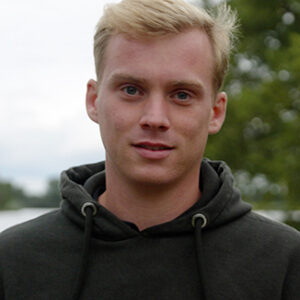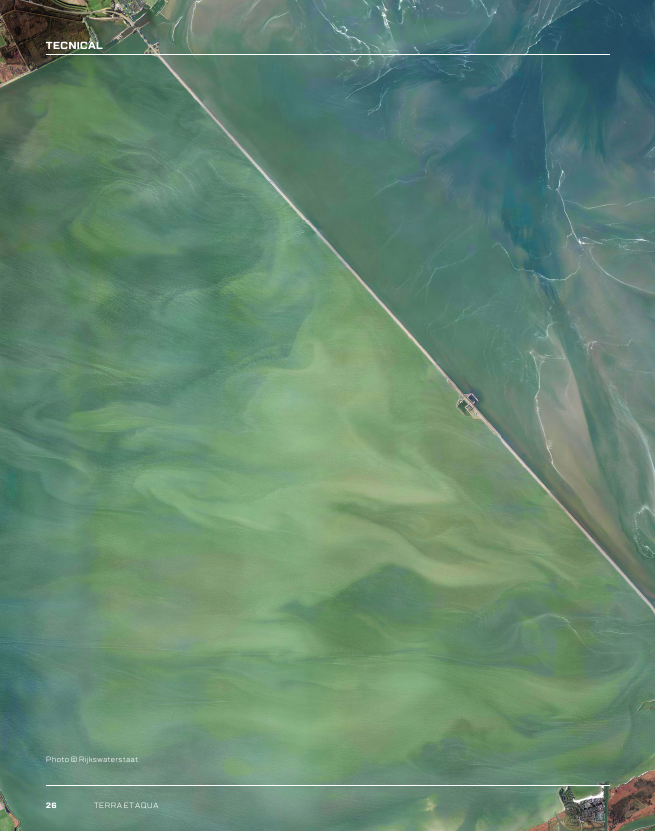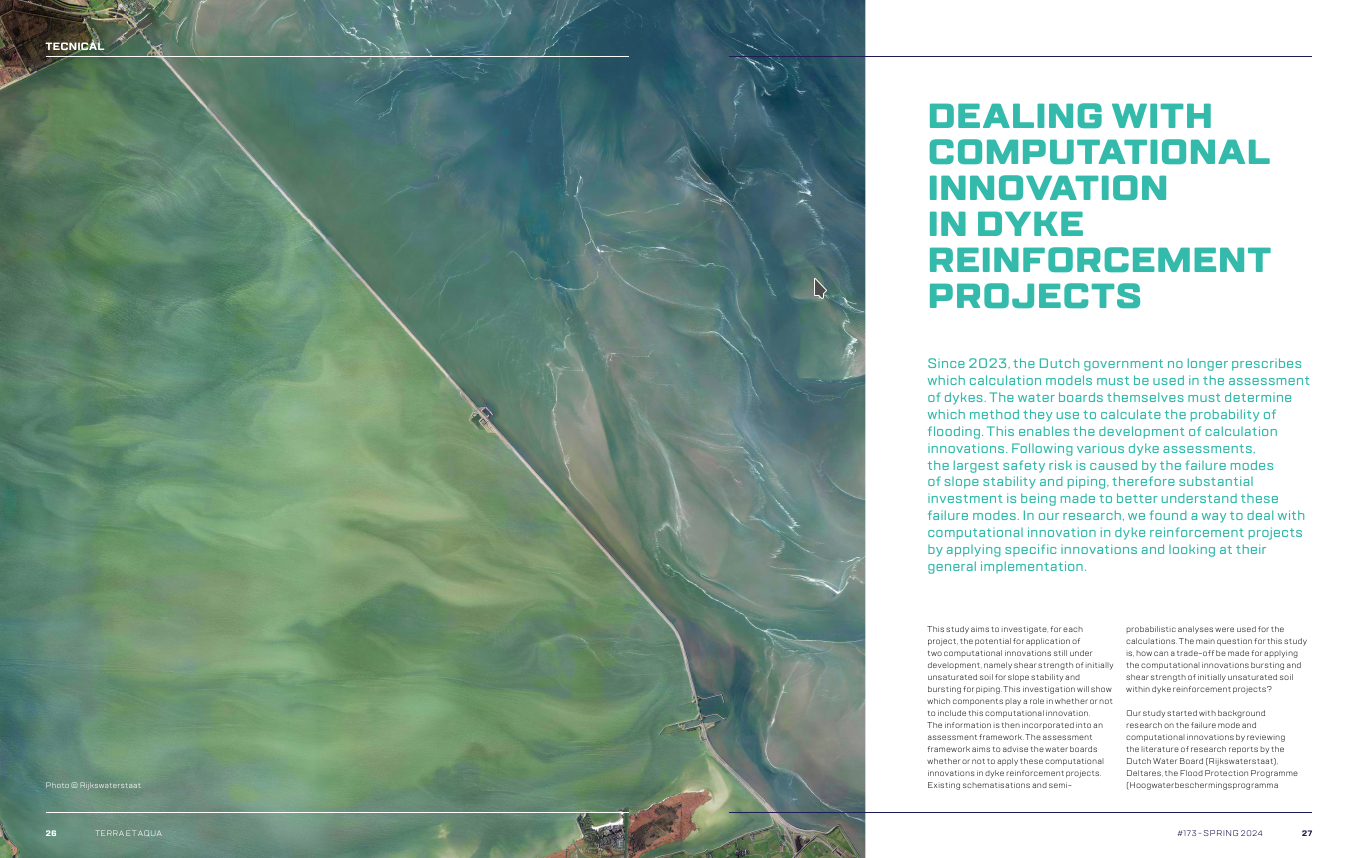This study aims to investigate, for each project, the potential for application of two computational innovations still under development, namely shear strength of initially unsaturated soil for slope stability and bursting for piping. This investigation will show which components play a role in whether or not to include this computational innovation. The information is then incorporated into an assessment framework. The assessment framework aims to advise the water boards whether or not to apply these computational innovations in dyke reinforcement projects. Existing schematisations and semi-probabilistic analyses were used for the calculations. The main question for this study is, how can a trade-off be made for applying the computational innovations bursting and shear strength of initially unsaturated soil within dyke reinforcement projects?
Our study started with background research on the failure mode and computational innovations by reviewing the literature of research reports by the Dutch Water Board (Rijkswaterstaat), Deltares, the Flood Protection Programme (Hoogwaterbeschermingsprogramma (HWBP)), as well as interviews with experts in the field. Data was then obtained from contact with water boards about the specific projects, with which the application of the computational innovation to the project is calculated and a gap analysis is done. Based on these results and conversations with industry experts, an assessment framework was drawn up, substantiating the choice of whether or not to include the computational innovation. After the background research was completed, we started focussing on the computational innovations.
At first, we will take a look at the shear strength of initially unsaturated soil for slope stability. For the initial unsaturated zone, the computational innovation was applied to two projects in the Netherlands: Sprok-Sterreschans-Heteren (SSH) and Pannerdense Waard-Westervoort (Pan-Wes). From this application, it can be concluded that for both projects the computational innovation leads to a large reduction of the task by using a Su table, which determines the shear strength of soil with undrained behaviour. SSH went from 77% approved dyke sections to 91%, with three additional dyke sections. In Pan-Wes, the sections were rejected at first but after applying the computational innovations 90% were approved.
These results are considered significant but cannot yet be applied in practice because there are many uncertainties about the structure and behaviour of the dyke. Moreover, knowledge about the computational innovation is still developing in practice, which makes water boards cautious. A conservative assumption or more research is necessary, but the potential is visible.
For the computational innovation of bursting for piping, the computational innovation was applied to two projects, namely Mastenbroek- IJssel (MAIJ) and Streefkerk-Ameide-Fort Everdingen (SAFE). From this application, it can be concluded that for the MAIJ project, there is no difference between applying and not applying the computational innovation. No significant results were obtained here. However, for the SAFE project, great returns were achieved at two of the ten locations. At one of these two locations, there is certainly no more safety risk, at the other location there may be no safety risk. This means that the computational innovation produces significant results for the SAFE project because here parts of the task are dropped. These results cannot yet be applied in practice because knowledge about the computational innovation is not yet at a far enough stage.
Results
Our studies have produced results that address the probability of success for two specific computing innovations. From these results, discussions were held on what considerations should be made to substantiate the decision whether or not to include computational innovation within a project. From these conversations with experts, it can be concluded that the expected yield from the application of computational innovations is central to the choice of whether or not to include it.
On the other hand, the knowledge and information available about the innovation and the dyke are important. Little information results in high research costs and/or long waiting times, making the higher investment costs in the innovation. This assessment framework incorporates this acquired knowledge. Water boards must use the results of this assessment framework to enter into discussions (with the HWBP, for example) about which choice they will make for including the computational innovations. If, for example, the weighing framework shows that the computational innovation should be included, but they do not want to do so, they must be able to substantiate this and otherwise apply it.
By offering the weighting framework as an aid to water boards, they are provided with tools to support the choice of whether or not to include computational innovations in a project. This gives a water board or the HWBP guidelines for identifying promising projects. This reduces the chance of wrongly not including the computational innovations resulting in a chance of over-dimensioning the dyke. The social values associated with this, such as sustainability, cost savings (of tax money) and effective use of space, are in addition to this trade-off framework.
The levees are dimensioned strong enough through this flowchart because the amount of knowledge and information is included in the trade-off framework. This tests the certainty of the computational innovation tests so that the levee will meet the 2050 standard. Moreover, there is such climate action attached to the product, because over- dimensioning is prevented.
Explanation of weighting framework
The weighting framework (as shown in Figure 1) consists of four steps and is intended as an aid to the discussion about whether or not to include the computing innovation. This is often done during preliminary exploration but can also be done later in the process, because it still seems promising due to possible changes in the project.










